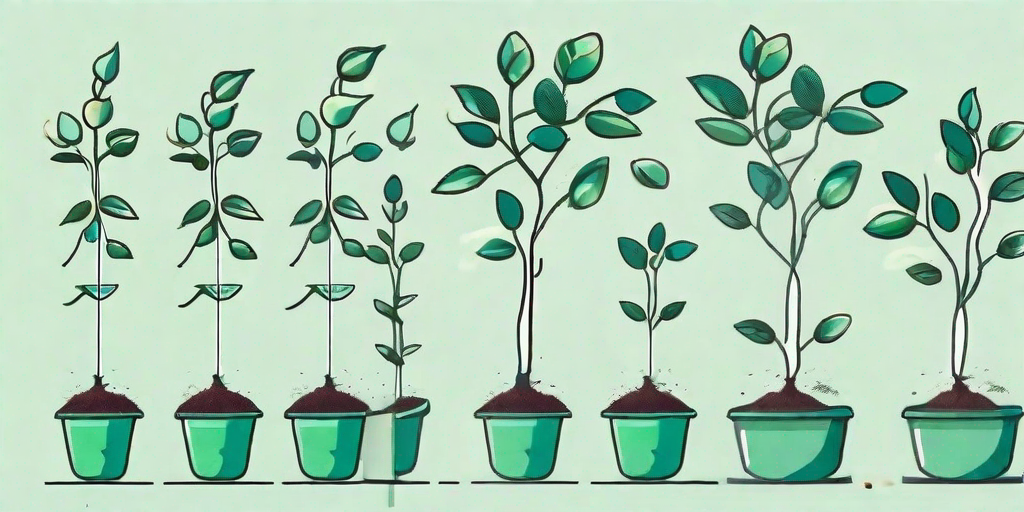
Greetings, green thumbs and aspiring arborists! If you've ever dreamed of growing your own fruit tree, but have been intimidated by the process, fear not. We're here to guide you through the journey from seed to sprout, and beyond. So, roll up your sleeves, grab your gardening gloves, and let's get started!
Understanding the Basics
Before we dive into the nitty-gritty of transplanting, it's essential to understand the basics of fruit tree growth. Fruit trees, like all plants, have a life cycle. They start as seeds, sprout into saplings, grow into trees, and eventually bear fruit. Sounds simple, right? Well, as any seasoned gardener will tell you, there's a bit more to it than that.
Each stage of a fruit tree's life requires specific care and conditions. For example, seeds need to be planted in the right type of soil and at the right depth to germinate. Saplings need plenty of sunlight and water to grow. And mature trees need regular pruning to stay healthy and productive. So, if you're serious about growing your own fruit tree, you'll need to become a bit of a tree whisperer.
Choosing the Right Tree
Now, you might be wondering, "What kind of fruit tree should I grow?" Well, that depends on a few factors. Firstly, consider your local climate. Some fruit trees, like apple and pear trees, thrive in cooler climates. Others, like citrus and avocado trees, prefer warmer weather. So, do your homework and choose a tree that's suited to your region.
Secondly, think about the size of your garden. Some fruit trees can grow quite large, so make sure you have enough space. If you're short on space, consider growing a dwarf variety. These trees are smaller but still produce plenty of fruit.
How to Transplant Your Fruit Tree
Alright, now that we've covered the basics, let's get to the fun part: transplanting your fruit tree. This is where your tree whispering skills will really come into play.
Transplanting a fruit tree involves moving it from one location to another. This could be from a pot to the ground, or from one part of your garden to another. It's a delicate process, but with the right approach, you can ensure your tree thrives in its new home.
Step 1: Prepare the New Location
Before you start digging up your tree, you'll need to prepare its new home. Choose a location that gets plenty of sunlight and has well-draining soil. Dig a hole that's twice as wide and just as deep as the tree's root ball. Then, fill the hole with a mix of compost and native soil. This will give your tree a nutritious start in its new location.
Step 2: Dig Up the Tree
Now, it's time to dig up your tree. This can be a bit tricky, especially if the tree is large. Start by digging a trench around the tree, about a foot away from the trunk. Then, carefully dig under the tree, trying to keep as much of the root ball intact as possible. Once the tree is free, lift it out of the ground and place it on a tarp.
Step 3: Plant the Tree
Next, move the tree to its new location and place it in the hole. The top of the root ball should be level with the ground. Fill in the hole with soil, tamping it down gently to remove any air pockets. Then, water the tree thoroughly.
Step 4: Care for the Tree
After transplanting, your tree will need some extra TLC. Water it regularly, but don't overwater. Too much water can cause root rot. Also, keep an eye out for signs of transplant shock, like wilting or yellowing leaves. If you notice these symptoms, consult a local nursery or extension service for advice.
Common Questions About Transplanting Fruit Trees
Transplanting a fruit tree can seem like a daunting task, but it doesn't have to be. Here are some common questions (and answers) to help you navigate the process.
When is the best time to transplant a fruit tree?
The best time to transplant a fruit tree is in early spring or late fall, when the tree is dormant. This reduces the risk of transplant shock.
How long does it take for a transplanted tree to bear fruit?
It can take several years for a transplanted tree to bear fruit. This is because the tree needs time to establish its root system and adjust to its new location. So, be patient and give your tree the care it needs, and you'll be rewarded with a bounty of fresh fruit.
Conclusion
Transplanting a fruit tree is a labor of love, but the rewards are well worth the effort. With patience, care, and a bit of tree whispering, you can grow a thriving fruit tree that will provide you with delicious, homegrown fruit for years to come. So, what are you waiting for? Grab your shovel and start digging!















